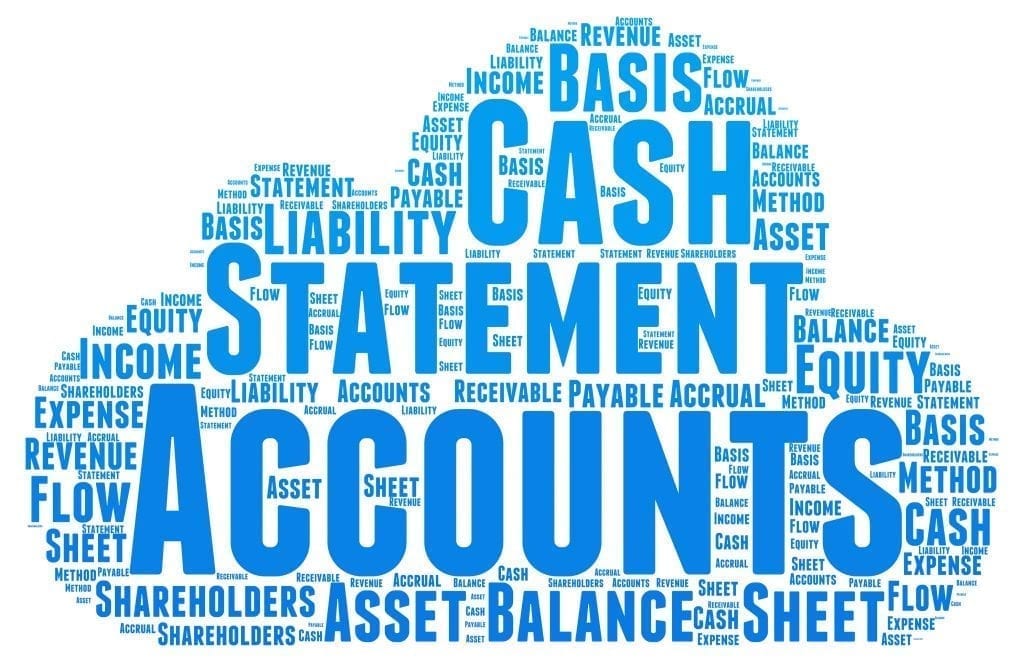The situation…
You’re having a conversation with your accountant, and you have know idea what they’re talking about. They’re using terms you’ve never heard before, and quite frankly, it’s confusing. You just want them to interpret your numbers, and/or tell you what to do to make your situation better.
Whether you’re a business owner who wants to learn more about your financial processes, or somebody who just wants to work more efficiently with your accountant, this post is a good place to start.
25 accounting terms to know…
1. 1040
1040 is the number of the form for a personal Federal income tax return. Complexity is added to the return based on which other forms and schedules (such as a Schedule C, explained below) need to be added based on your individual situation.
2. 1099
The 1099 is a series of information returns required to be filed with the IRS and furnished to the taxpayer. The most common types of 1099s are:
- 1099-MISC – for payments received as an independent contractor. This will also trigger the need to file a Schedule C.
- 1099-B – this is where a broker will report gains or losses resulting from the sale of stocks, bonds, mutual funds, etc.
- 1099-DIV – if you invested in stocks or mutual funds that paid you a dividend during the year, this is the form you will receive in order to include that income on your tax return.
- 1099-G – receive a tax refund or unemployment income from your state last year? If yes, then they’ll send you one of those as you may need to include it in income this year.
- 1099-R – this will include your distributions from:
- Retirement funds or profit-sharing plans
- IRAs
- Annuities, pensions or insurance contracts
- Permanent and total disability payments under life insurance contracts
- Charitable gift annuities
- 1099-C – this is for cancellation of debt, which is sometimes included as income. These were very common during the financial crisis, when lenders would need to cancel the remaining balance of a mortgage.
3. Accounts Payable (AP)
Accounts Payable is a liability tracked on the balance sheet, and represents the amount of money that you owe to other people.
4. Accounts Receivable (AR)
Accounts Receivable is an asset tracked on the balance sheet, and represent the amount of money that other people owe you for products or services rendered to them.
5. Accrual Accounting
Accrual accounting is the method of recording transactions in your General Ledger as they occur, as opposed to when the resulting cash from that transaction is paid or received. This method of accounting applies to both revenue and expenses. For example, if you a payroll period ends on 12/28/18, but you don’t pay your employees (cash) until 1/4/19, then the wage expense related to those 1/4/19 payments would be recorded in December of 2018.
6. Balance Sheet
The balance sheet is the “statement of financial position” and is most representative of the financial health of a business. The balance sheet lists assets, liabilities and owner’s equity. The latter two should add up to the total of all assets on the balance sheet. Why? Because of double-entry accounting.
7. Capital
Capital is the sum of the financial (cash) or tangible assets of the business. You will most often hear this term in the context of start-up capital. In other words, how much money one has to start a business.
8. Cash Accounting
Cash, along with accrual accounting (above) is the other common method of accounting. Whereas in accrual accounting we record the transactions as they occur, in cash accounting we record the transactions as the corresponding cash impact occurs. If I were to translate this to your personal finances, if you bought groceries on your credit card you would realize the expense when you paid the principal on the credit card, not when you bought the groceries.
9. Chart of Accounts
The chart of accounts is the organizational tool for all the “buckets” (accounts) which you will record transactions into for classification purposes. At a high level, the chart of accounts is the listing of all of the revenue, expense, asset, liability and equity accounts, organized by parent and child accounts. The chart of accounts is important, as it helps to determine which financial statement (P&L, balance sheet or cash flow statement) the corresponding activity will appear in, as well as the variety and level of detail which you will have available downstream to make business decisions.
10. Dashboard
A dashboard is a one-page visual representation of your company’s KPIs (see below). The purpose of a dashboard is to be a means by which you can quickly and efficiently digest meaningful information about your business. See here for a broader explanation.
11. Debits & Credits
This is the meat of double-entry accounting. Debits are usually expenses or assets, and credits are usually income, liabilities or equity. Each accounting entry needs to balance, meaning, the same dollar amount of debits and credits. For example, the $1,000 purchase of a computer would be:
- Debit: Computer (an asset account), and
- Credit Cash (also an asset account)
As you can see in this example, the entry has two sides, and also balances.
12. Depreciation
Depreciation is the recording of the loss of value of an asset over time.
Anybody who has needed to buy a new computer after a few years knows that assets lose value over time. You’ll notice in the above example that the computer was not expensed. So how do we expense it? Depreciation.
The cost of that computer will be depreciated over it’s useful life until the balance of the asset account is $0, and the full $1,000 in the example above has been recognized on the P&L as expense. Here’s how the accounting entry would work:
- Debit: Depreciation Expense (P&L account), and
- Credit: Accumulated Depreciation (a contra-asset on the balance sheet)
13. General Ledger
The general ledger is the record of all the accounting transactions for the business. All of the debits and credits for the business are listed here.
14. Gross Profit (see also: Margin)
Gross Profit is equal to Gross Revenue minus Cost of Goods Sold (COGS). Cost of Goods Sold is an expense which is variable with, and directly associated with, the production of revenue. For example, if you are a re-seller of widgets, and each widget costs you $60 wholesale but you sell them for $100, then your Gross Profit on each widget is $40.
15. K-1
A K-1 is a tax form, think of it as a 1099 for partners in a partnership, that is the derivative of a partnership tax return (Form 1065). The K-1 is a report of the distributive share of a partnership’s income, deductions and credits to each partner. Each partner in the partnership receives a K-1.
16. KPI
Traditionally, KPI stands for Key Performance Indicator. According to KPI.org:
Key Performance Indicators (KPIs) are the critical (key) indicators of progress toward an intended result. KPIs provides a focus for strategic and operational improvement, create an analytical basis for decision making and help focus attention on what matters most.
However, at SOAR I like to refer to them as Key Predictive Indicators. To me, the latter is more forward-looking and what a business owner should be tracking. The past is not always indicative of the future.
Here is a video which talks about how to get started developing your KPIs.
17. Operating Cash Flow
There are three ways cash comes into and goes out of the business from:
- Operations
- Investing Activities
- Financing Activities
Operating cash flow is the cash that comes from the primary operation of the business. In other words, selling goods and/or services to customers, net of expenses. Remember we talked about accrual accounting up above? Well, that applies here and is the reason why Net Income and Operating Cash Flow are not always the same number. Cash is the lifeblood of any business, so this metric should be paid careful attention to.
18. Overhead
Overhead items are the expenses of your business that are not directly attributable to the production of income. A good example is rent.
19. P&L (see also: Profit & Loss Statement, Income Statement)
The P&L is the statement of operational performance for the business. Basically, it tells you how much income (hopefully) you made for a given period. The P&L generally works vertically from gross revenue to cost of goods sold to operating expenses to “other” items and finally to Net Income/(Loss).
20. Retained Earnings
Retained Earnings is an item which lives in the equity section of the balance sheet. This is the accumulated total of all earnings and losses which have occurred since the businesses’s inception.
21. Schedule C
The Schedule C is a schedule on the 1040. Those taxpayers which have their own sole-proprietorship and/or have 1099-MISC income as an independent contractor will need to file this form with their 1040. The Schedule C is basically a P&L for your business or independent contractor work, as both income and expenses are reported here.
22. W-2
The W-2 is the form an employee receives from their employee which shows their income and payroll withholdings (taxes and other benefits) for the year. We’ve already talked about being an independent contractor, and the IRS is pretty clear when it comes delineating between who is an employee and who’s an independent contractor. For further reading on that topic, check out this page from the IRS.
23. W-4
The W-4 is a form you fill out for your employer when you begin work. Basically, the W-4 informs your employer as to how much tax should be withheld from your paycheck.
24. W-9
A W-9 is most commonly used to provide your name, address and Social Security number to an organization who is going to issue you a 1099-MISC.
25. Working Capital
Working capital is a measure of a business’s short-term financial health. The calculation to measure working capital is Current Assets minus Current Liabilities. The more working capital, the better, as this is a measure of whether or not you would be able to satisfy all of your short-term liabilities in a pinch. Measuring working capital is not the end-all-be-all of short-term financial health, but it is a piece of the puzzle and you’ll hear it referenced quite often.
Summary
To summarize, this is my list of 25 most commonly referred to accounting terms and phrases. There are certainly more, but this list should form a good basis for being conversational with your accountant or in other business settings. I would encourage you to get to know this list as well as others.
For further reading and research:
- 30 Basic Accounting Terms, Acronyms and Abbreviations Students Should Know
- Accounting Terminology Guide – Over 1,000 Accounting and Finance Terms
When you’re ready, here are 4 ways we can help you grow:
- Subscribe to “Accounting for Marketing” e-newsletter featuring your industry’s latest headlines
- Join our growing Facebook group of marketing professionals
- Download “Scaling the Data-Driven Agency” ebook
- Let’s work together! Let’s start a conversation to see if we’re a good fit.

